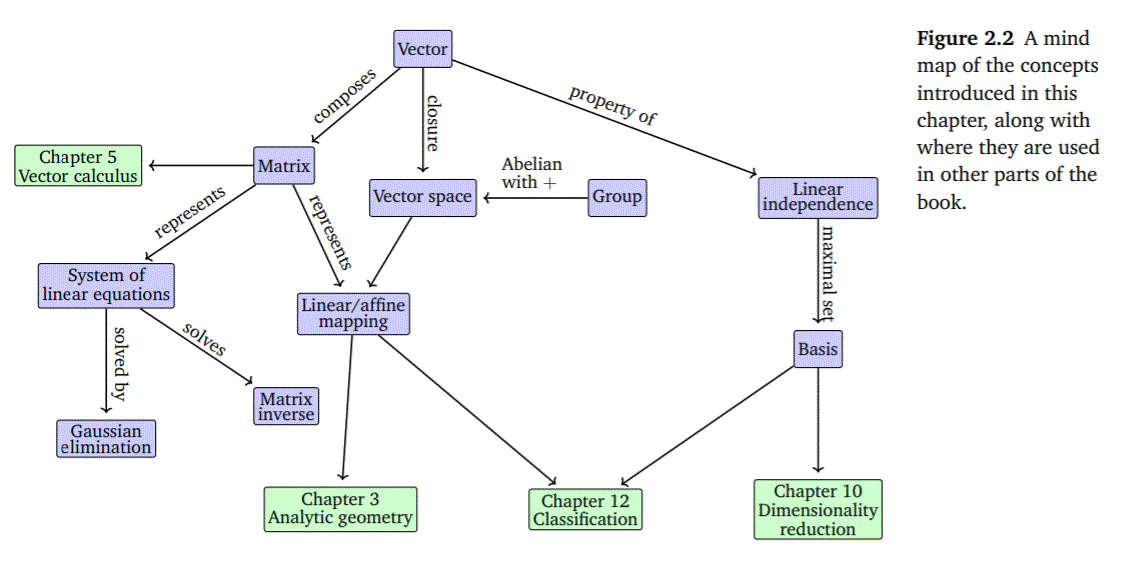Table of contents
Overview
 Figure 1: Linear Algebra mindmap (Deisenroth et al., 2020)
Figure 1: Linear Algebra mindmap (Deisenroth et al., 2020)
Notation
| Name | Description | Example | LaTeX |
|---|---|---|---|
| Vector | Bold, lowercase font | $ \boldsymbol{x} $ | |
| Matrix | Bold, uppercase font | , | $ \boldsymbol{A} $ |
| Matrix Entry | is the entry in the row and column | $ \boldsymbol{A}_{i,j} $ | |
| Matrix Row | th row of is denoted as or | ||
| Matrix Column | th column of is denoted as or |
Vector
References
- Deisenroth, M. P., Faisal, A. A., & Ong, C. S. (2020). Mathematics for Machine Learning. Cambridge University Press. https://doi.org/10.1017/9781108679930
- Mathematical objects. (2021). https://dynref.engr.illinois.edu/rvn.html[Online; accessed 2021-07-18]
- Petulla, S. (2021). Linear algebra cheatsheet. https://observablehq.com/@petulla/explorable-linear-algebra-cheatsheet[Online; accessed 2021-08-13]
- Kolter, Z., & Do, C. (2015). Linear Algebra Review and Reference. http://cs229.stanford.edu/section/cs229-linalg.pdf[Online; accessed 2021-08-13]
- Computational Linear Algebra for Coders. (2021). https://github.com/fastai/numerical-linear-algebra[Online; accessed 2021-08-13]
- Linear Algebra for Deep Learning. (2021). https://www.quantstart.com/articles/scalars-vectors-matrices-and-tensors-linear-algebra-for-deep-learning-part-1/[Online; accessed 2021-08-13]
- Immersive Linear Algebra. (2021). http://immersivemath.com/ila[Online; accessed 2021-08-13]
- Strang, G. (2009). Introduction to Linear Algebra (Fourth). Wellesley-Cambridge Press.